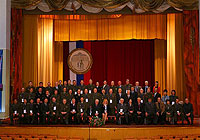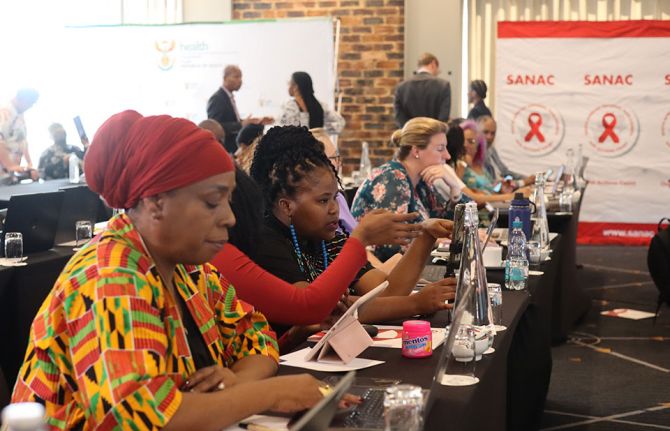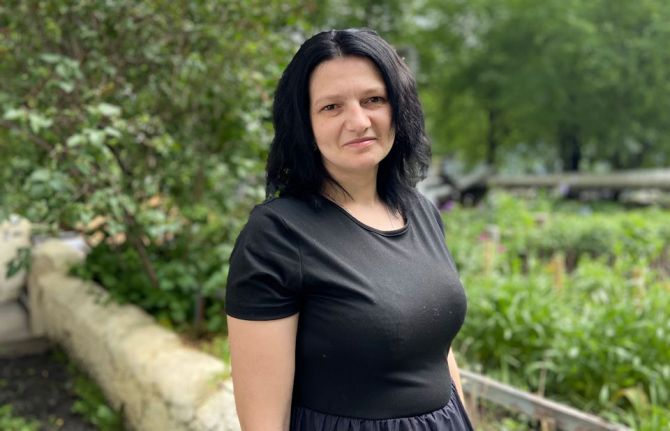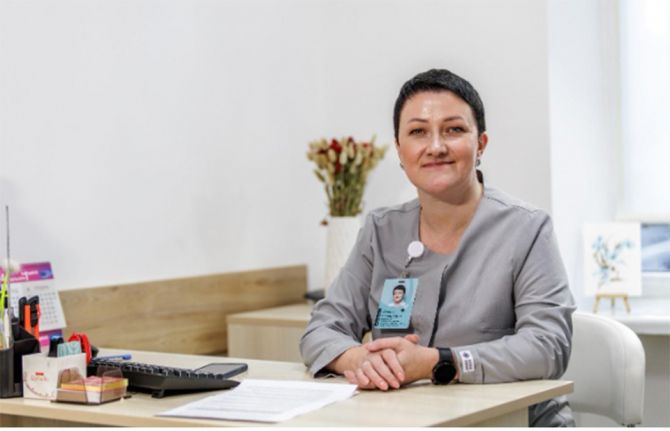
Feature Story
HIV prevention and the uniformed services in CIS
08 October 2008
08 October 2008 08 October 2008
Fifth International Conference on HIV/AIDS Prevention in Armed Forces was held in September 2008, St. Petersburg, Russia
Studies show that rates of sexually transmitted infections among armed forces are generally higher than in civilian populations. Among male population groups, military and police report the highest risk behaviour, such as engaging in sex without using a condom, and highest number of partners.
The good news is that prevention programmes to reduce transmission of sexually transmitted diseases including HIV can be implemented within structured institutions like the military. Existing facilities can be used for testing and counselling, prevention, care and support services. Provision of education and condoms can slow the spread of HIV and as young recruits have strong influence among their peers, within and outside the service, they can transmit clear messages to the surrounding community, thus, changing perceptions and behaviours that can positively impact the larger population.
The UN Security Council made history in January 2000 when for the first time it debated a health issue—AIDS. By subsequently adopting Resolution 1308 (2000), it highlighted the possible growing impact of AIDS on social instability and emergency situations and potential damaging impact of HIV on the health of international peacekeeping personnel. The UN Declaration of Commitment on HIV/AIDS adopted by Member States in the General Assembly Special Session (June 2001) also includes national uniformed services as a key area to be addressed in the global action against the spread of the HIV epidemic.
In addition to the growing engagement of Member States, leading regional bodies are increasingly acknowledging the need to integrate AIDS education into the operations of uniformed services.
Fifth International Conference on HIV/AIDS Prevention in Armed Forces
It is against this context that the “Fifth International Conference on HIV/AIDS Prevention in Armed Forces” was held in September 2008 in St. Petersburg, Russia. The event brought together a broad coalition of participants including politicians, military health service providers, scientists from the Russian healthcare system, epidemiologists and communicable disease specialists engaged in HIV prevention as well as diagnostic and treatment issues. Representatives from governmental bodies, NGOs, and international organisations also took part.
Dr Sergei Furgal, Director, a.i., RST/Eastern Europe and Central Asia, noted the significance of the gathering which distinguished it from previous military conferences in the region: “National delegations represented the armed forces of all nine CIS countries and participants discussed a wide range of programmatic issues.”
“Within the framework of the CIS Regional Network on Military and AIDS it was decided to shape a coordination mechanism for information and experiences exchange with a clear indication of UNAIDS’ role in this process,” he continued.
More than 500 participants gathered to discuss issues related to lowering the prevalence of HIV infection amongst servicemen and servicewomen in the region. Participants attended from the Commonwealth of Independent States (CIS) countries (Armenia, Belarus, Kazakhstan, Kyrgyzstan, Moldova, Russian Federation, Tajikistan, Turkmenistan and Ukraine).
There were several specific and significant outcomes from the meeting. Participants agreed on the need to improve coordination between military medical service departments in order to lower HIV prevalence amongst military personnel. They also plan to expand cooperation with international, governmental and non-governmental organizations to work together to promote HIV prevention in the armed forces. They will consider establishing a coordination method to exchange information and experiences amongst organizations working to curb HIV prevalence in the armed forces of conference participant countries. UNAIDS and the Centre for Social Development and Information have offered to provide support to establish this coordination method.
Other initiatives under consideration include expanding programmes of educational activities for different ranks of servicemen and servicewomen, creating a web site to share HIV information among participant countries’ armed forces, and inviting representatives from other country’s uniformed services agencies to take part in conferences.
The Sixth International Conference on HIV/AIDS Prevention in Armed Forces will take place in 2009 in the Russian Military Medical Academy, St. Petersburg, Russia.
HIV prevention and the uniformed services in CIS
Publications:
United Nations Security Council Resolution 1308
On the front line: A review of policies and programmes to address AIDS among peacekeepers and uniformed services (pdf, 890 kb)
Guidelines for HIV/AIDS interventions in emergency settings ( fr | es | ru )
Trainer's Guide (1st Edition): IASC Workshop on HIV/AIDS Interventions in Emergency Settings ( fr | es | ru )
Report of the UNAIDS Expert Panel on HIV Testing in United Nations Peacekeeping Operations



